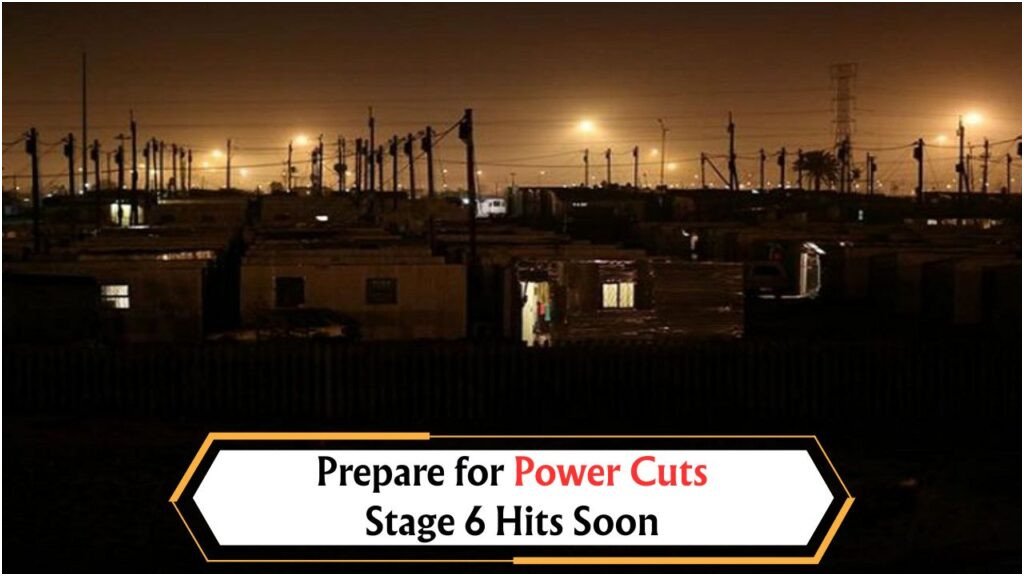Eskom’s August 2025 Stage 6 Load Shedding Alert: As South Africa braces for another round of load shedding, Eskom’s August 2025 Stage 6 announcement has left citizens wondering about the resilience of the national grid. Load shedding, an unfortunate reality for many South Africans, disrupts daily routines and businesses. The leaked emergency power plan sheds light on Eskom’s strategy to mitigate the impacts of this high-level load shedding. This stage indicates severe power constraints, requiring immediate and efficient solutions to ensure the country’s energy demands are met. Understanding the implications of this alert and Eskom’s emergency plan is crucial for everyone affected by this energy challenge.
Understanding Stage 6 Load Shedding in August 2025
Stage 6 load shedding is a critical level in Eskom’s load reduction strategy, reflecting significant strain on South Africa’s power supply. During this stage, the national grid is under immense pressure, necessitating drastic measures to prevent a total blackout. In August 2025, this stage indicates that the country needs to shed up to 6,000 MW of electricity. This equates to several hours of daily power cuts across various regions, affecting households, businesses, and essential services. The frequency and unpredictability of these outages can disrupt economic activities and daily life, making it essential to have contingency plans.
- Citizens are urged to conserve power during peak hours to alleviate pressure on the grid.
- Businesses should consider alternative energy solutions, such as generators or solar power, to maintain operations.
- Critical services, including hospitals, must ensure backup systems are fully operational.
- Residents should stay informed about load shedding schedules via Eskom’s official channels.
- Community initiatives to promote energy-saving practices can contribute significantly to easing demand.
The Leaked Emergency Power Plan for Stage 6
The leaked emergency power plan reveals Eskom’s approach to managing the severe load shedding situation. It outlines strategic measures aimed at stabilizing the national grid and minimizing disruptions. Key elements of the plan include mobilizing additional energy resources, enhancing grid maintenance, and accelerating infrastructure development. By leveraging renewable energy sources and ensuring optimal performance of existing power plants, Eskom aims to mitigate the impact of Stage 6 load shedding. This proactive approach is critical to safeguarding the economy and maintaining public trust in the utility provider.
- The plan prioritizes fast-tracking renewable energy projects to supplement the power supply.
- Enhanced maintenance schedules are set to improve the reliability of aging infrastructure.
- Collaboration with independent power producers to inject additional capacity into the grid is emphasized.
- Public awareness campaigns aim to educate citizens on effective energy-saving practices.
- Investments in smart grid technologies are proposed to enhance efficiency and response times.
Impact of Stage 6 Load Shedding on South Africa
The repercussions of Stage 6 load shedding extend beyond immediate power cuts. Economically, industries reliant on consistent electricity supply face operational challenges, potentially leading to reduced productivity and financial losses. Socially, the unpredictability of outages affects the quality of life, with households grappling with frequent interruptions to daily activities. Educational institutions may also suffer, disrupting learning as students and teachers adapt to irregular schedules. Addressing these impacts requires coordinated efforts from both the government and private sector to implement sustainable solutions.
 SASSA Child Grant: R560 Payments Set for August 22, 2025 – Ensure Your Bank Details Are Up-to-Date!
SASSA Child Grant: R560 Payments Set for August 22, 2025 – Ensure Your Bank Details Are Up-to-Date!
| Sector | Impact | Suggested Solutions | Long-term Benefits | Short-term Challenges | Potential Risks | Opportunities |
|---|---|---|---|---|---|---|
| Economy | Reduced productivity | Invest in renewable energy | Increased energy independence | High initial costs | Resource misallocation | Job creation in energy sector |
| Social | Disrupted daily life | Energy-saving initiatives | Community resilience | Behavioral resistance | Public dissatisfaction | Enhanced community cooperation |
| Education | Interrupted learning | Flexible scheduling | Adaptability skills | Technological barriers | Learning gaps | Innovative teaching methods |
Steps to Mitigate Load Shedding Effects
To navigate the challenges posed by Stage 6 load shedding, immediate and long-term strategies must be adopted. Individuals and businesses can take proactive steps to reduce dependency on the national grid and enhance energy efficiency. Implementing solar panels, using energy-efficient appliances, and optimizing energy consumption patterns are practical measures. For businesses, investing in energy storage solutions and diversifying energy sources can ensure continuity during outages.
- Invest in solar energy: Solar panels provide a sustainable alternative, reducing reliance on Eskom.
- Energy-efficient appliances: Appliances with high energy ratings consume less power, easing grid demand.
- Energy storage systems: Batteries store excess power, providing backup during outages.
- Regular maintenance of generators: Ensures reliability during extended power cuts.
- Energy audits: Identify areas to improve efficiency and reduce consumption.
Understanding the Role of Renewable Energy
Renewable energy sources play a pivotal role in addressing the challenges posed by Stage 6 load shedding. By diversifying the energy mix and reducing dependency on coal, South Africa can achieve greater energy security. Renewable energy projects, such as wind and solar farms, offer sustainable solutions that align with global environmental goals. These projects not only provide cleaner energy but also create jobs and stimulate economic growth. Encouraging investment in renewables is a strategic move towards a resilient energy future.
- Wind energy offers a reliable complement to solar power, especially during night hours.
- Biogas from organic waste presents an innovative way to generate electricity.
- Hydropower, although limited, can support peak demand periods efficiently.
- Geothermal energy remains an untapped potential with great promise.
- Government incentives can accelerate the adoption of renewable technologies.
FAQ: Navigating Load Shedding Challenges
What is Stage 6 load shedding?
Stage 6 involves shedding up to 6,000 MW, resulting in extended power outages across regions.
 NSFAS R5,200 Allowance Deposits Begin September 8, 2025 – Ensure Your Bank Details Are Correct
NSFAS R5,200 Allowance Deposits Begin September 8, 2025 – Ensure Your Bank Details Are Correct
How can I prepare for load shedding?
Invest in alternative energy sources like solar panels and keep emergency kits ready.
What businesses are most affected?
Manufacturing, retail, and IT sectors face significant disruptions due to power cuts.
Can renewable energy solve load shedding?
Yes, by reducing dependency on coal, renewables can enhance energy security and stability.
How does load shedding affect daily life?
It disrupts routines, affects productivity, and can lead to increased operational costs.




